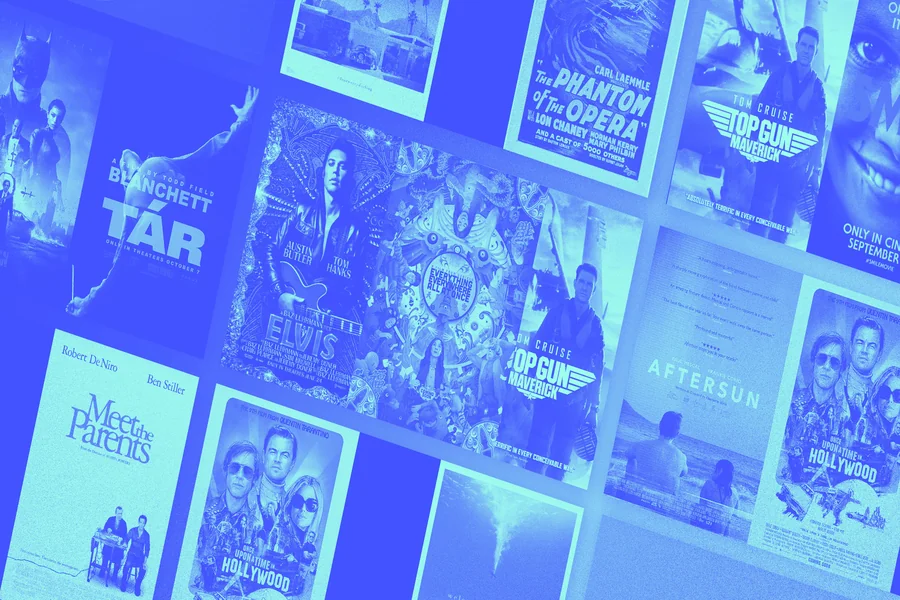In the highly competitive world of film marketing, creating a strong and impactful first impression is crucial. One of the most effective tools used to achieve this is the movie poster. A movie poster is much more than just a promotional image; it is a strategic marketing asset that plays an essential role in shaping audience perceptions, generating interest, and boosting ticket sales. This article will delve into the reasons why movie posters are integral to a film’s marketing strategy and explore their significance in the world of cinema marketing.
The Power of Visual Appeal: A Poster’s First Impression
When it comes to film marketing, the first interaction audiences have with a movie is often through its poster. The power of visual content cannot be overstated. A movie poster is usually the first visual representation of a film, and it serves as a quick, powerful introduction to the movie’s themes, tone, and genre. Think about how iconic movie posters like Jaws, Star Wars, or The Dark Knight have shaped our expectations even before watching the films. These posters are not just promotional tools but visual representations of a film’s brand.
A compelling movie poster taps into human psychology by offering a snapshot of the film’s atmosphere. Whether it’s a dark, moody design for a horror movie or a bright, energetic layout for a comedy, the poster’s visual elements play a pivotal role in generating curiosity and anticipation. The combination of color schemes, typography, and images is used strategically to evoke emotions that resonate with potential viewers, encouraging them to engage further with the film.
The Poster as a Marketing Asset: Brand Building for a Film
A well-designed movie poster is integral to building the brand of a film. Just as companies invest in logos to represent their brands, filmmakers rely on posters to establish an instantly recognizable visual identity. The poster helps define the tone and genre of the movie, acting as a brand ambassador for the film.
For instance, consider the posters of superhero films. They tend to follow a distinct visual format — bold colors, action shots, and iconic characters. This consistency helps to establish an instantly recognizable identity, creating a loyal fanbase who can quickly associate the poster design with the film franchise. The key to this success lies in the poster’s ability to distill the essence of the film into a single image.
Generating Buzz: Movie Posters as Social Media Catalysts
In the modern age, social media is an indispensable tool for spreading the word about any upcoming movie. Movie posters are designed to be shared and circulated across social platforms, providing instant visibility. They are often the first thing that gets posted across Instagram, Facebook, Twitter, and Pinterest, thus generating buzz before a movie’s release.
One of the ways movie posters serve as catalysts is through their aesthetic appeal and shareability. Fans, influencers, and movie enthusiasts alike share these posters to express their excitement or to create conversations. The viral nature of movie posters can generate significant organic reach for the film, helping it gain traction even before the film hits theaters. This dynamic has only increased with the rise of digital marketing strategies, where movie posters are designed specifically to be eye-catching in the crowded social media feeds.
Marketing Beyond the Theater: Movie Posters in Merchandising
While the theatrical release is a key moment for movie posters, their impact extends far beyond the silver screen. Movie posters are also integral to the merchandising strategy of a film. Merchandising in the film industry is a significant revenue stream, and movie posters often serve as the primary visual elements for a wide range of products, from T-shirts to mugs to limited-edition collectibles.
In some cases, posters are reimagined for merchandise purposes. The success of these products depends heavily on the initial impact of the movie poster. Iconic posters can even become valuable memorabilia, sold at auction for substantial amounts. This marketing tactic enables a film’s brand to expand its reach and tap into new demographics, making it an essential part of a film’s long-term strategy.
Targeting Niche Audiences: Posters Tailored for Specific Genres
Different genres of movies require different approaches when it comes to designing posters. A romantic comedy poster will differ significantly from a horror or action film’s poster, and this is where movie posters play a crucial role in audience segmentation. By catering the poster design to a specific genre’s target audience, filmmakers can make sure that their film reaches the right people.
For example, the poster of a horror film may feature dark colors, unsettling imagery, and mysterious figures, creating an atmosphere of suspense and fear. On the other hand, a comedy poster will focus on bright colors, light-hearted typography, and comedic elements, which instantly appeal to an audience looking for laughter and entertainment.
By targeting the design toward specific genre expectations, movie posters ensure that the correct audience is drawn in. This segmentation increases the chances of conversion, i.e., turning the interested viewer into a ticket buyer. The poster essentially acts as an advertisement tailored to the tastes and preferences of niche audiences, making it an effective marketing tool for films of all kinds.
Enhancing the Movie’s Storytelling: A Poster as a Narrative
Movie posters are often designed to offer more than just a visual representation of the film; they act as a narrative device in themselves. A well-crafted poster encapsulates the essence of the film’s plot, characters, or theme in a single image. Filmmakers use symbolism and iconography in posters to create layers of meaning that will intrigue the viewer and spark their curiosity.
For instance, a poster for a thriller movie might use a shadowy figure in the background, with a faint glimpse of a protagonist in the foreground. This suggests a cat-and-mouse dynamic that is central to the movie’s narrative. Similarly, a fantasy film poster may feature mystical creatures or magical landscapes to hint at the imaginative worlds within the film.
This storytelling approach ensures that the poster not only markets the movie but also serves as a preview of the cinematic experience to come. It builds an emotional connection between the audience and the story long before they step into the theater, sparking curiosity and anticipation.
The Role of Movie Posters in Award Campaigns
For films vying for awards or recognition during the award season, the poster plays a pivotal role in creating visibility and generating momentum. Academy Award campaigns, in particular, are highly competitive, and the movie poster can help a film stand out among the sea of contenders. A bold and memorable poster can attract attention from critics, industry professionals, and voters, helping the film to gain recognition in an already crowded field.
In these cases, movie posters often serve dual purposes — promoting the movie to the general public while also positioning it as a serious contender in various awards categories. Posters are designed to highlight key aspects of the film, such as the director’s name, star power, and critical acclaim — elements that are important during awards campaigns.
Conclusion: A Fundamental Component of Movie Marketing
Movie posters are undeniably one of the most essential components of a film’s marketing strategy. From their ability to create a visual identity for the film to their role in generating buzz on social media, these marketing assets are indispensable in today’s cinematic landscape. They are not just tools to convey the movie’s content; they are powerful tools that help to shape how a movie is perceived, talked about, and consumed by audiences.
As the digital age continues to evolve, so too does the role of movie posters in film marketing. Whether through physical prints or digital renditions, these posters will remain integral to a film’s brand identity, audience engagement, and overall success at the box office.



